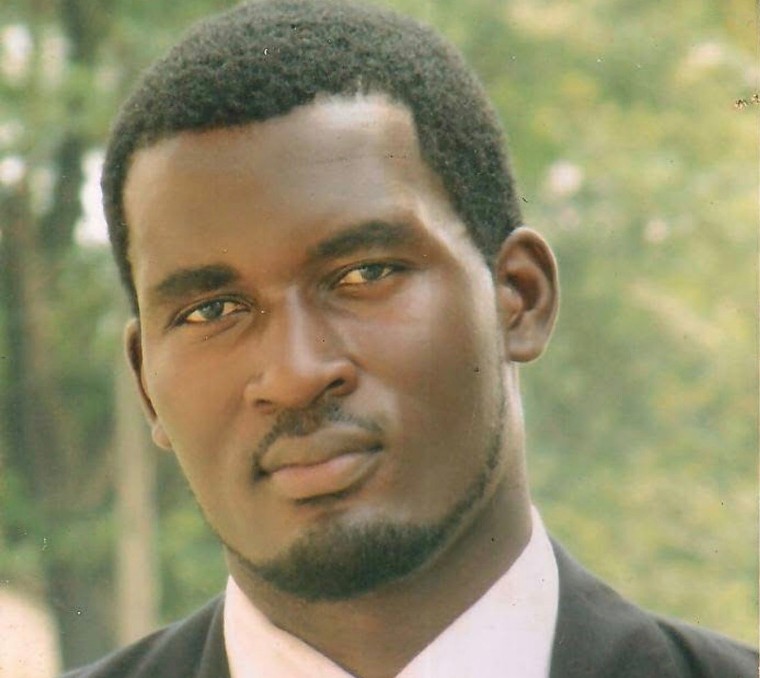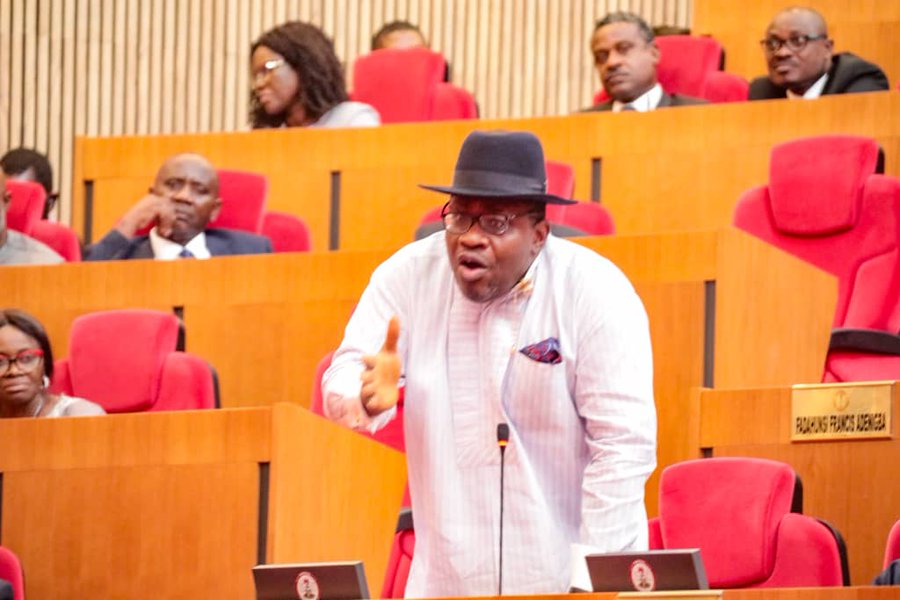A Monument to Promise—and a Call to Renewal: Few industrial projects in Africa carry as much symbolic weight as the Ajaokuta Steel Company (ASC). Envisioned over four decades ago as the cornerstone of Nigeria’s industrial sovereignty, Ajaokuta was not just a factory; it was a national dream forged in steel.
As a young metallurgical student, I first stood at its massive gates in late 2007, awestruck by the vastness of its blast furnaces, rolling mills, and unfinished rail links. To me, Ajaokuta represented both the triumph of vision and the tragedy of stagnation—a reminder that great ambitions require not only resources, but discipline, continuity, and technical leadership.
Today, as a metallurgical engineer who has worked across academia, research, and the steel industry in Nigeria and abroad, I am convinced that Ajaokuta can still fulfil its founding vision—to anchor the nation’s technological independence and serve as a hub for Africa’s sustainable industrial growth. But achieving that goal requires more than political rhetoric; it demands a strategic engineering roadmap rooted in scientific modernisation, human-capital revival, and transparent governance.
Ajaokuta Steel Company was conceived in 1979 through a cooperation agreement between Nigeria and the former Soviet Union. Situated on the banks of the River Niger in Kogi State, the site was chosen for its access to Itakpe iron ore, Jakura limestone, and proximity to energy and transport corridors.
By design, ASC was built to operate on the Blast Furnace–Basic Oxygen Furnace (BF–BOF) route, the same process used by major steel producers such as POSCO in Korea and ArcelorMittal in Europe. Its first phase – intended to produce 1.3 million tonnes of long products annually—was more than 90% complete by the late 1980s.
However, political transitions, contractual disputes, and shifts in global steel economics left the plant idle. Subsequent efforts—concessions to foreign operators, privatisation attempts, and multiple “revival committees”—produced reports but little production. The result: a facility built to power a nation, now operating at a fraction of its potential.
Steel remains the foundation of industrial civilisation. Every highway, refinery, power plant, and hospital relies on it. No country in history has industrialised without mastering steel production. China’s economic rise began with its 1980s investment in integrated steel complexes; India’s sustained GDP growth parallels the expansion of its Bhilai and Bokaro plants. Even smaller economies – South Korea, Turkey, Brazil – used steel to anchor their manufacturing bases.
Nigeria consumes an estimated 7–8 million tonnes of steel annually, most of it imported. This dependency drains foreign reserves and exposes infrastructure to fluctuating global prices. Reviving Ajaokuta could reverse that trend, providing structural materials for housing, defense, and renewable-energy infrastructure.
Diagnosing the Core Challenges
1. Technological Obsolescence: Ajaokuta’s original BF–BOF configuration, though robust in the 1980s, is now outdated. Modern global steelmaking favours Electric Arc Furnace (EAF) systems powered by renewable electricity and capable of recycling scrap steel, reducing CO₂ emissions by up to 60%.
Retrofitting Ajaokuta’s furnaces with automated control systems, waste-heat recovery, and digital monitoring could transform it from a relic into a competitive 21st-century producer.
2. Feedstock and Ore-Quality Deficiency: While Nigeria’s iron-ore reserves are abundant, they require beneficiation to raise Fe content and remove impurities. Currently, most deposits contain 35–45% Fe, below optimal levels for efficient reduction.
Establishing ore-beneficiation and pelletization plants near Itakpe is critical. Research from the National Metallurgical Development Centre (NMDC) in Jos and local universities has shown that beneficiation through magnetic separation and flotation can raise ore grades to 65–68% Fe—ideal for both BF and EAF routes.
3. Infrastructure and Energy Limitations: Ajaokuta’s idle furnaces are only part of the problem. The Itakpe–Ajaokuta–Warri rail line, intended to link mines to port facilities, has suffered decades of delay. Reliable power—estimated at 120 MW for full operation—remains inconsistent.
Integrating the plant into Nigeria’s new Energy Transition Plan could unlock hybrid power solutions combining grid electricity, natural-gas turbines, and renewable solar units designed for industrial clusters.
4. Institutional Weakness and Policy Instability: Since the 1980s, over a dozen administrative bodies have claimed partial oversight of the steel sector. Each policy reset disrupts continuity, discouraging private investment. Nigeria needs a National Steel and Materials Authority (NSMA) to coordinate research, regulation, and investment across federal and state boundaries, ensuring long-term stability.
5. Human-Capital Attrition: Perhaps the most understated crisis is the loss of metallurgical expertise. Many of the engineers trained for Ajaokuta in the 1980s have retired; a new generation of Nigerian metallurgists lacks industrial exposure.
Revival plans must therefore include capacity-building programs, international internships, and collaborations with universities in the U.S., India, and South Korea. Human capital, not machinery, will ultimately determine Ajaokuta’s future.
Engineering a Modern Revival Strategy
Phase 1 – Technical Audit and Modular Re-commissioning.
The first step is an independent technical audit led by a consortium of metallurgical engineers, project managers, and economists—not politicians.
Facilities such as the Light Section Mill, Wire Rod Mill, and Medium Section Mill can be reactivated first, as they require less energy and can quickly generate revenue. Early success in these smaller units can rebuild investor confidence and train a new workforce before full blast-furnace operations resume.
Phase 2 – Hybrid Production Route
A pragmatic approach is to retain the BF–BOF infrastructure while introducing EAF mini-mills within the complex. These hybrid systems will:
– Utilise Nigeria’s growing scrap-steel market.
– Integrate renewable energy sources.
– Serve as training grounds for digital process monitoring and AI-based quality control.
This phased hybridisation mirrors successful transformations in India’s Steel Authority (SAIL) and South Africa’s ArcelorMittal facilities.
Phase 3 – Public-Private Partnerships and Investment Incentives.
Rather than full privatization, Ajaokuta should operate under a Build–Operate–Transfer (BOT) model with transparent performance metrics. International partners such as POSCO, ArcelorMittal, or SSAB Americas can provide technical expertise, while Nigerian engineers lead local operations to ensure technology transfer.
Tax incentives, import-duty waivers on machinery, and guarantees of policy stability for 15–20 years would make such investments feasible.
Harnessing Sustainability and Circular Economy
As a researcher, I have long emphasised the role of green metallurgy—the idea that steelmaking can coexist with environmental stewardship.
Modern EAF systems can operate using recycled steel and alternative carbon sources such as shredded rubber tyres, a concept I have helped implement in American steel plants. By applying similar principles in Nigeria, Ajaokuta could become a model of sustainable industrialisation—turning waste into value while reducing carbon footprints. Additionally, waste gases from furnaces can be captured to produce syngas or hydrogen, paving the way for Hydrogen Direct Reduction (HDR) in the long term. This would align Nigeria’s steel sector with the global shift toward decarbonised production envisioned under the Paris Agreement.
Ajaokuta must also serve as a national training and research center.
The establishment of a National Institute of Metallurgy and Advanced Materials (NIMAM) on its premises could institutionalize ongoing R&D, internships, and curriculum partnerships with Nigerian and foreign universities.
Such a center would train metallurgists, corrosion scientists, materials engineers, and data scientists specializing in Industry 4.0 metallurgy—where process control, AI, and real-time data analytics drive efficiency.
Nigeria already has a talented base of scientists and engineers. What they require is a system that connects education with industrial application. Ajaokuta can be that bridge.
Reviving Ajaokuta goes beyond steel—it’s a strategic economic imperative.
– Import substitution: Nigeria currently spends over $3.5 billion annually importing steel products. Domestic production could cut that by 60% within five years.
– Job creation: The plant could directly employ 10,000 workers and indirectly support over 100,000 through logistics, fabrication, and supply chains.
– Infrastructure development: Locally produced steel would reduce project costs for railways, bridges, and renewable-energy structures by up to 25%.
– Regional integration: Ajaokuta could supply the ECOWAS region, positioning Nigeria as a net steel exporter.
Governance: The Missing Alloy
Every engineering system fails not just from mechanical breakdown but from governance corrosion. For Ajaokuta, success hinges on transparent management insulated from politics. A professional board composed of engineers, economists, and environmental scientists should oversee operations under strict performance benchmarks.
Accountability must be embedded—quarterly audits, independent environmental reporting, and public disclosure of production metrics. Only then can Nigerians trust that their steel plant is not another subsidy-driven bureaucracy but a performance-based enterprise.
Global Collaboration and Knowledge Transfer
In an increasingly interconnected world, isolation is not an option.
Nigeria must build partnerships with global research networks such as the World Steel Association, the African Union’s African Minerals Development Centre, and technical universities specialising in steelmaking (e.g., Missouri S&T, IIT-Kharagpur, and TU Bergakademie Freiberg).
Through these alliances, Nigeria can access the latest simulation tools, materials data banks, and clean-energy metallurgical research.
Ajaokuta should also host annual Steel and Materials Innovation Conferences, bringing together policymakers, investors, and scientists to review progress and set research priorities. This would turn the plant into not just a factory, but a living innovation ecosystem.
Ajaokuta’s story is more than an industrial blueprint—it is a mirror reflecting Nigeria’s capacity for transformation. It challenges us to embrace science as policy, merit as leadership, and continuity as culture. As a metallurgist who has worked with advanced thermal-mapping technologies and industrial optimisation in both academic and production settings, I have seen how the right technical framework can turn an idle furnace into a national powerhouse.
If properly revived, Ajaokuta could:
– Anchor Nigeria’s energy transition through green metallurgy.
– Serve as West Africa’s hub for process-engineering research.
– Empower a new generation of metallurgists, materials scientists, and innovators.
In doing so, it would fulfil its founding vision—not just to produce steel, but to forge capacity, knowledge, and pride.
Conclusion: Forging the Future in Steel
Ajaokuta Steel Company remains one of Africa’s most ambitious engineering projects. Its story is not a tale of failure but of unfinished potential. With scientific modernisation, policy continuity, and transparent governance, the complex can rise again—this time as a beacon of sustainable industrialisation for Africa.
Steel has always been more than a material; it is a measure of national strength. When we finally fire Ajaokuta’s furnaces again—powered not by outdated bureaucracy but by innovation and integrity – it will symbolise Nigeria’s rebirth as a nation that builds, not just dreams.
About the Author:
Damilola Balogun is a metallurgical engineer and researcher whose work spans materials processing, sustainable steelmaking, and industrial innovation. His research on fibre-optic thermal mapping and peritectic-steel solidification has been published in leading international journals and applied in the U.S. and African steel industries. He advocates for sustainable metallurgy and policy-driven industrial transformation across the Global South.






